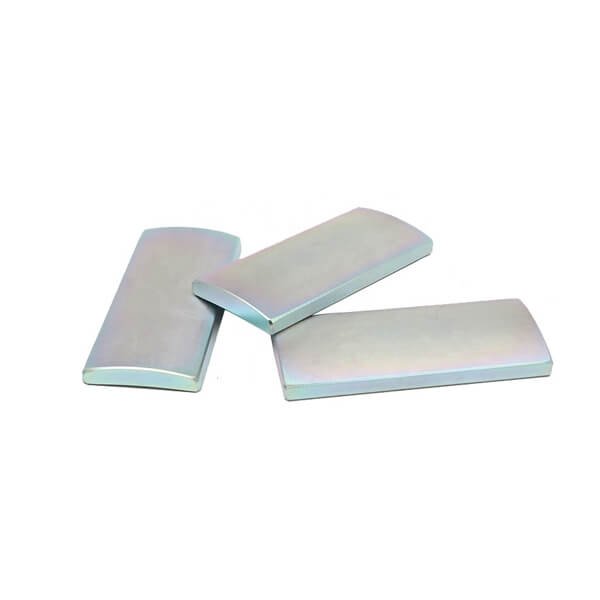
Zinc Coated Magnet For Sale
Standard electrode potential of zinc: -0.76 V / SHE
Zinc chloride coating has high efficiency, low bath voltage
Main bath salts: KCl, ZnCl₂, H₃BO₃
High-chromium passivation: CrO₃, H₂SO₄, HNO₃
A zinc-coated neodymium magnet has a thin bluish or silvery layer that offers basic corrosion protection at a lower cost than nickel or epoxy. It is mainly used in indoor and dry environments where high durability isn’t critical. While economical and easy to produce, zinc coatings wear faster and provide less resistance in humid or harsh conditions.
Zinc coating for neodymium magnets
Zinc coating can be applied to neodymium magnets by various processes. The permanent magnet industry has used zinc plating to protect neodymium magnets since the 1980s, which is quite a long time. Zn coating magnet is widely used in electronic products, such as hard drives, mobile phones, earphones, etc.
Electrochemical Properties of Zinc
The standard electrode potential of zinc is -0.76 V / SHE, so zinc coating is often used as sacrificial anodes for the substrates.
The potential of zinc is lower than hydrogen under aqueous conditions, so electroplating zinc in aqueous solutions requires the involvement of an additional compound.
Environmental Protection and Plating Techniques
Due to concerns regarding environmental protection, cyanide galvanizing has been replaced by other techniques. Bath formulations – for electroplating zinc on neodymium magnets – include chlorides, sulfates, and zincates. Zinc chloride galvanizing is the most commonly used technique so far.
Advantages of Zinc Chloride Coating
Zinc chloride coating have a relatively high current efficiency and relatively low bath voltage. This means that the zinc chloride coating technique is more energy efficient than other galvanizing techniques.
Bath Formulation
The main salt in the bath formulation of zinc chloride coating includes KCl, ZnCl2, and H3BO3. The additives in the formulation include surfactants and whitening agents.
Surfactants change the electrode potential and cathodic polarization, so they can refine the grain size of the zinc coating’ aromatic aldehydes and aromatic ketones, which are used as whitening agents to enhance the brightness and smoothness of the zinc coating.
Passivation of Zinc Coating
The chemically active nature of zinc makes it necessary for the passivation of zinc coating after plating. The zinc coating reacts with the passivator and generates a dense chemically transformed film. Zinc coating can be divided into colored zinc and blue-white zinc, depending on the passivation effects.
One important thing to mention: The hexavalent chromium technique has been replaced by the trivalent chromium technique, due to the strong carcinogenic effect.
Colored Zinc Plating
For the colored zinc plating techniques, the zinc coating of neodymium magnets will gradually build a passivation film after reacting with acidic components in the air. The thickness and colors of the passivation film will change as time goes by.
A simple high-chromium passivation formulation consists of chromic anhydride, H2SO4, and HNO3. Chromic anhydride will dissolve in water and form chromic acid, which has a polishing effect on its strong oxidizing feature. It should be noted that chromium-free passivation is the trend of zinc plating for neodymium magnets.
Conclusion
The content above already introduces the basics of zinc coating for neodymium magnets. This is a fundamental protective layer for their quality and durability.
As a custom neodymium magnet supplier, Osenc can offer various types of coating techniques to choose from. You can always pick the one that best fits your applications and expectations.